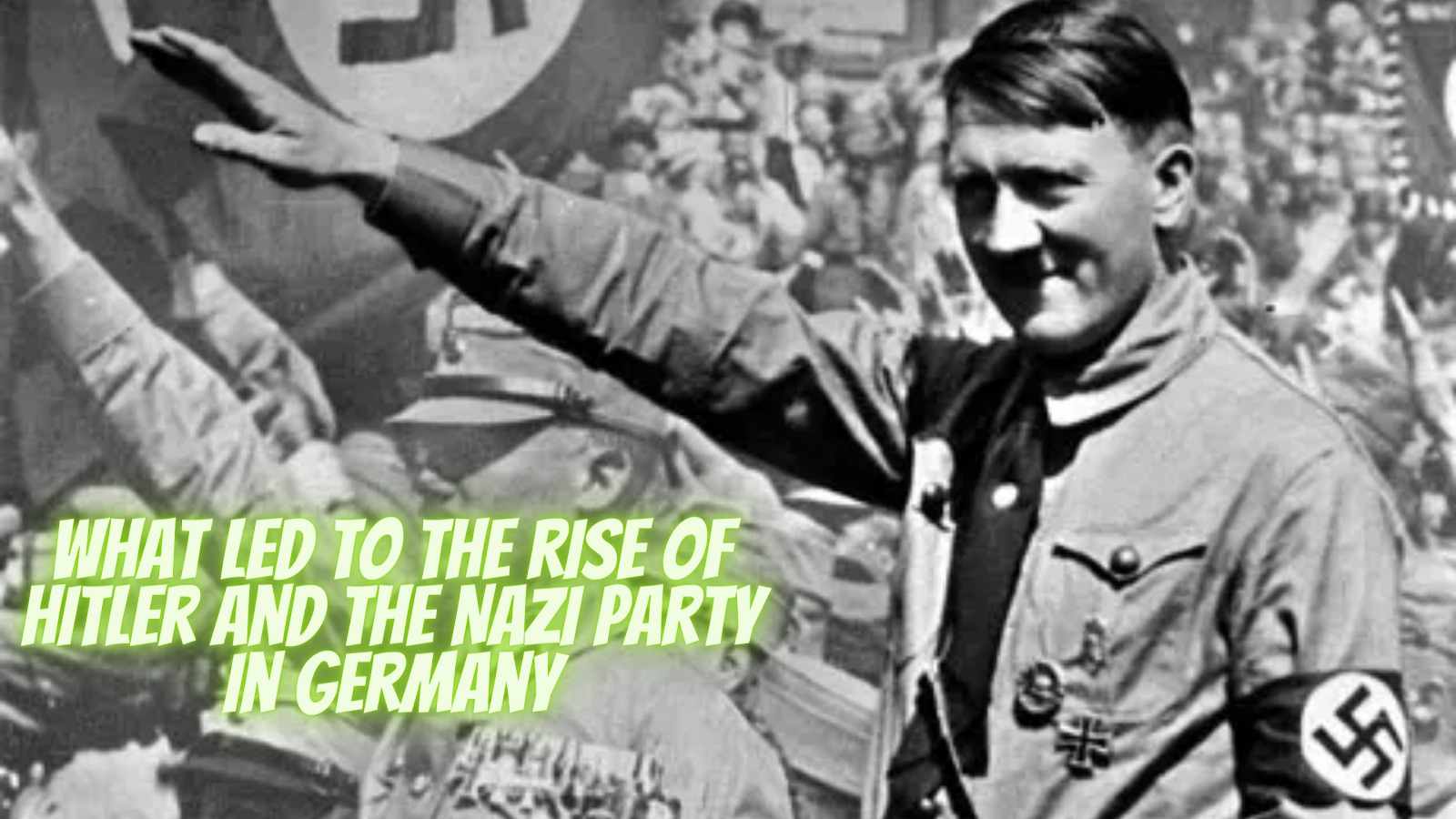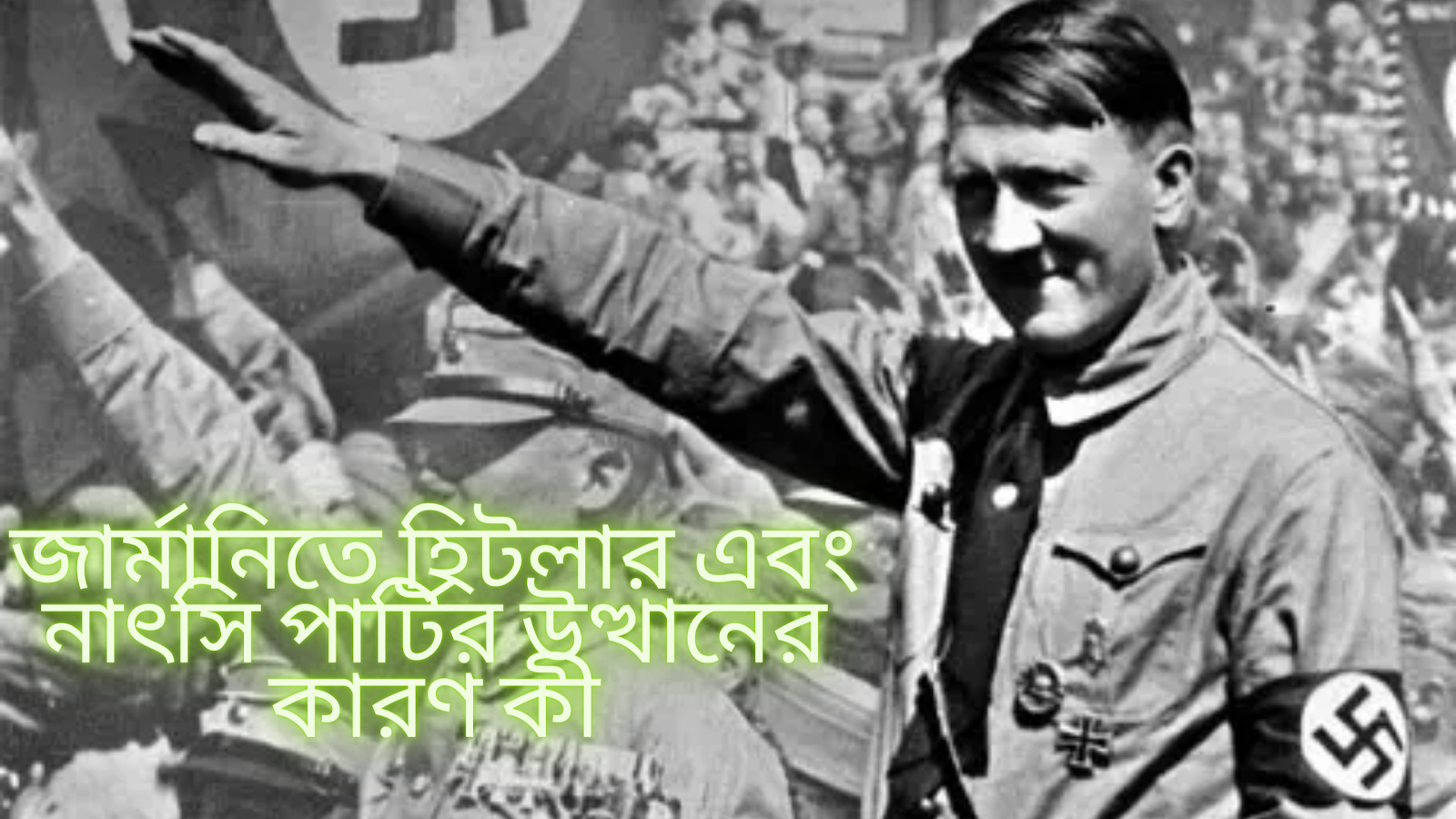What led to the rise of Hitler and the Nazi Party in Germany
The rise of Adolf Hitler and the Nazi Party in Germany is one of the most significant events in modern history, leading to the deaths of millions of people and the destruction of Europe during World War II. In this essay, I will examine the factors that led to the rise of Hitler and the Nazi Party, including the historical context of post-World War I Germany, the weaknesses of the Weimar Republic, and the role of propaganda and intimidation in consolidating Nazi power.
Historical context
The rise of Hitler and the Nazi Party cannot be understood without examining the historical context of post-World War I Germany. After the defeat of Germany in the Great War, the Treaty of Versailles imposed severe economic, military, and territorial restrictions on the country. The treaty left Germany humiliated and economically devastated, with high levels of inflation, unemployment, and poverty.
The harsh conditions of the Treaty of Versailles, combined with the loss of territory and prestige, created a sense of resentment and anger among many Germans. They felt that they had been unfairly punished for the war and that their country had been humiliated on the world stage. This sense of national humiliation and resentment became fertile ground for the rise of extremist political movements, such as the Nazi Party.
Weaknesses of the Weimar Republic The weaknesses of the Weimar Republic also contributed to the rise of Hitler and the Nazi Party. The Weimar Republic was established in 1919 as a democratic government, but it faced numerous challenges from the beginning. The republic was plagued by political instability, economic crises, and social unrest, which made it difficult to govern effectively.
The Weimar Republic was also weakened by its own weaknesses and failures. The republic was seen by many Germans as weak and ineffectual, unable to address the country's problems or protect the interests of its citizens. This perception of weakness and incompetence made it easier for extremist political movements, such as the Nazi Party, to gain support and influence.
Propaganda and intimidation
The rise of Hitler and the Nazi Party was also due to their effective use of propaganda and intimidation. The Nazis used a variety of propaganda techniques, including posters, speeches, and films, to promote their ideas and mobilize support. They also used intimidation tactics, such as violence and harassment, to intimidate their opponents and consolidate their power.
One of the most effective propaganda techniques used by the Nazis was the creation of a cult of personality around Hitler. Hitler was portrayed as a charismatic and visionary leader who could restore Germany to its former glory. He was also depicted as a strong and decisive leader who could protect Germany from its enemies and restore order to the country.
The Nazis also used propaganda to create a sense of national pride and identity. They promoted the idea of the "Aryan" race, a concept of racial superiority that portrayed Germans as a master race. This idea was used to justify Nazi policies of racial discrimination and persecution against Jews, Roma, and other groups.
Conclusion
Inconclusion, the rise of Hitler and the Nazi Party was the result of a complexset of factors, including the historical context of post-World War I Germany, the weaknesses of the Weimar Republic, and the effective use of propaganda and
intimidation. The rise of Hitler and the Nazi Party had devastating consequences for Germany and the world, leading to the deaths of millions of people and the destruction of Europe during World War II. It is important to remember the lessons of this history and to be vigilant against the dangers of
extremism and authoritarianism in the present day.
জার্মানিতে হিটলার এবং নাৎসি পার্টির উত্থানের কারণ কী
জার্মানিতে অ্যাডলফ হিটলার এবং নাৎসি পার্টির উত্থান আধুনিক ইতিহাসের অন্যতম উল্লেখযোগ্য ঘটনা, যা দ্বিতীয় বিশ্বযুদ্ধের সময় লক্ষ লক্ষ মানুষের মৃত্যু এবং ইউরোপের ধ্বংসের দিকে পরিচালিত করে। এই প্রবন্ধে, আমি প্রথম বিশ্বযুদ্ধ-পরবর্তী জার্মানির ঐতিহাসিক প্রেক্ষাপট, ওয়েমার প্রজাতন্ত্রের দুর্বলতা এবং নাৎসিকে সুসংহত করার ক্ষেত্রে প্রচার ও ভীতি প্রদর্শনের ভূমিকা সহ হিটলার এবং নাৎসি পার্টির উত্থানের কারণগুলি পরীক্ষা করব। ক্ষমতা
ঐতিহাসিক প্রেক্ষাপট
প্রথম বিশ্বযুদ্ধ-পরবর্তী জার্মানির ঐতিহাসিক প্রেক্ষাপট পরীক্ষা না করে হিটলার ও নাৎসি পার্টির উত্থান বোঝা যাবে না। মহান যুদ্ধে জার্মানির পরাজয়ের পর, ভার্সাই চুক্তি দেশটির উপর কঠোর অর্থনৈতিক, সামরিক এবং আঞ্চলিক বিধিনিষেধ আরোপ করে। চুক্তিটি জার্মানিকে লাঞ্ছিত এবং অর্থনৈতিকভাবে বিধ্বস্ত করেছে, উচ্চ স্তরের মুদ্রাস্ফীতি, বেকারত্ব এবং দারিদ্র্যের সাথে।
ভার্সাই চুক্তির কঠোর শর্ত, ভূখণ্ড এবং প্রতিপত্তি হারানোর
সাথে মিলিত, অনেক জার্মানদের মধ্যে বিরক্তি ও ক্ষোভের অনুভূতি তৈরি করেছিল। তারা অনুভব
করেছিল যে যুদ্ধের জন্য তাদের অন্যায়ভাবে শাস্তি দেওয়া হয়েছে এবং তাদের দেশ বিশ্ব
মঞ্চে অপমানিত হয়েছে। জাতীয় অপমান এবং বিরক্তির এই অনুভূতি নাৎসি পার্টির মতো চরমপন্থী
রাজনৈতিক আন্দোলনের উর্বর ভূমিতে পরিণত হয়েছিল।
ওয়েমার প্রজাতন্ত্রের দুর্বলতা
ওয়েমার প্রজাতন্ত্রের দুর্বলতাগুলিও হিটলার এবং নাৎসি পার্টির উত্থানে অবদান রেখেছিল। ওয়েইমার প্রজাতন্ত্র 1919 সালে একটি গণতান্ত্রিক সরকার হিসাবে প্রতিষ্ঠিত হয়েছিল, তবে এটি শুরু থেকেই অসংখ্য চ্যালেঞ্জের মুখোমুখি হয়েছিল। প্রজাতন্ত্র রাজনৈতিক অস্থিতিশীলতা, অর্থনৈতিক সংকট এবং সামাজিক অস্থিরতায় জর্জরিত ছিল, যা কার্যকরভাবে শাসন করা কঠিন করে তুলেছিল।
ওয়েমার প্রজাতন্ত্রও তার নিজের দুর্বলতা এবং ব্যর্থতার কারণে দুর্বল হয়ে পড়েছিল। প্রজাতন্ত্রকে অনেক জার্মান দুর্বল এবং অকার্যকর হিসাবে দেখেছিল, দেশের সমস্যা মোকাবেলা করতে বা নাগরিকদের স্বার্থ রক্ষা করতে অক্ষম। দুর্বলতা এবং অযোগ্যতার এই উপলব্ধি নাৎসি পার্টির মতো চরমপন্থী রাজনৈতিক আন্দোলনের সমর্থন ও প্রভাব অর্জনকে সহজ করে তুলেছিল।
অপপ্রচার ও ভয়ভীতি
হিটলার এবং নাৎসি পার্টির উত্থানও তাদের প্রচার এবং ভীতি প্রদর্শনের কার্যকর ব্যবহারের কারণে হয়েছিল। নাৎসিরা তাদের ধারনা প্রচার করতে এবং সমর্থন জোগাড় করতে পোস্টার, বক্তৃতা এবং চলচ্চিত্র সহ বিভিন্ন ধরনের প্রচার কৌশল ব্যবহার করে। তারা তাদের প্রতিপক্ষকে ভয় দেখাতে এবং তাদের ক্ষমতা সুসংহত করার জন্য সহিংসতা এবং হয়রানির মতো ভয় দেখানোর কৌশলও ব্যবহার করেছিল।
নাৎসিদের দ্বারা ব্যবহৃত সবচেয়ে কার্যকর প্রচার কৌশলগুলির মধ্যে একটি ছিল হিটলারের চারপাশে ব্যক্তিত্বের একটি সম্প্রদায় তৈরি করা। হিটলারকে একজন ক্যারিশম্যাটিক এবং দূরদর্শী নেতা হিসাবে চিত্রিত করা হয়েছিল যিনি জার্মানিকে তার আগের গৌরব ফিরিয়ে আনতে পারেন। তাকে একজন শক্তিশালী এবং সিদ্ধান্তমূলক নেতা হিসাবেও চিত্রিত করা হয়েছিল যিনি জার্মানিকে তার শত্রুদের হাত থেকে রক্ষা করতে এবং দেশে শৃঙ্খলা ফিরিয়ে আনতে পারেন।
নাৎসিরাও জাতীয় গর্ব এবং পরিচয়ের অনুভূতি তৈরি করতে প্রচারণা ব্যবহার করেছিল। তারা "আর্য" জাতি ধারণাকে প্রচার করেছিল, জাতিগত শ্রেষ্ঠত্বের একটি ধারণা যা জার্মানদেরকে একটি প্রধান জাতি হিসাবে চিত্রিত করেছিল। এই ধারণাটি ইহুদি, রোমা এবং অন্যান্য গোষ্ঠীর বিরুদ্ধে জাতিগত বৈষম্য এবং নিপীড়নের নাৎসি নীতির ন্যায্যতা দেওয়ার জন্য ব্যবহার করা হয়েছিল।
উপসংহার
উপসংহারে, হিটলার এবং নাৎসি পার্টির উত্থান ছিল এক জটিল
কারণের ফল, যার মধ্যে রয়েছে প্রথম বিশ্বযুদ্ধ-পরবর্তী জার্মানির ঐতিহাসিক প্রেক্ষাপট,
ওয়েমার প্রজাতন্ত্রের দুর্বলতা এবং প্রচার ও ভীতি প্রদর্শনের কার্যকর ব্যবহার। হিটলার
এবং নাৎসি পার্টির উত্থান জার্মানি এবং বিশ্বের জন্য বিধ্বংসী পরিণতি করেছিল, যার ফলে
দ্বিতীয় বিশ্বযুদ্ধের সময় লক্ষ লক্ষ মানুষের মৃত্যু এবং ইউরোপ ধ্বংস হয়েছিল। এই
ইতিহাসের পাঠ মনে রাখা এবং বর্তমান সময়ে চরমপন্থা ও স্বৈরাচারের বিপদের বিরুদ্ধে সজাগ
থাকা জরুরি।









No comments:
Post a Comment